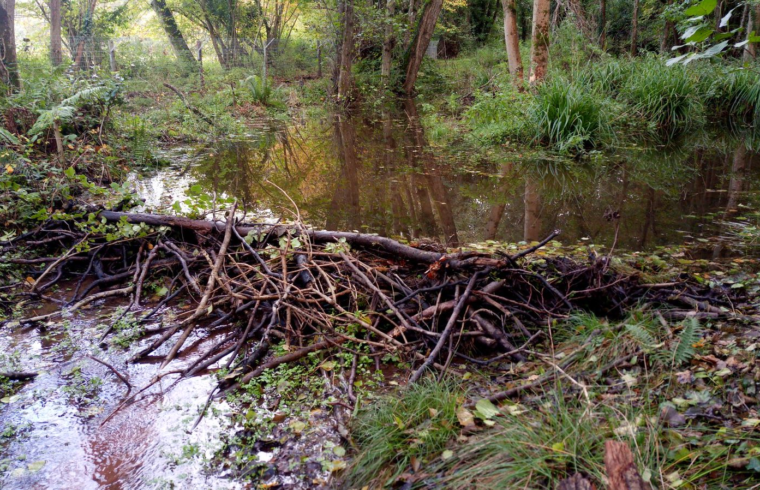Beavers which have recently been re-introduced to Somerset have constructed a dam – the first in the area since beavers were hunted to extinction in the UK over 400 years ago.
The Eurasian beavers were relocated from Scotland and released onto the National Trust’s Holnicote Estate in January 2020 as part of an effort to reduce flooding.
Water held back by the beavers’ engineering works reduces flood risks and has been found to significantly increase biodiversity.
Hidden cameras recorded footage of the beavers felling trees and accumulating vegetation to build the small structure, which they began making in October and which has created an “instant wetland”, according to rangers at the site.
It is the first time the trust has reintroduced beavers in its 125-year history.
“It might look modest, but this beaver dam is incredibly special – it’s the first to appear on Exmoor for almost half a millennium and marks a step change in how we manage the landscape,” said Ben Eardley, project manager at the National Trust.
“What’s amazing is that it’s only been here a few weeks but has created an instant wetland. We’ve already spotted kingfishers at the site, and over time, as the beavers extend their network of dams and pools, we should see increased opportunities for other wildlife, including amphibians, insects, bats and birds.”

Under construction: The new beaver dam at Holnicote Estate in Exmoor, Somerset
(Sally Robinson/National Trust)
Beaver dams, ponds and channels help prevent flooding by slowing, storing and filtering water as it flows downstream. The process also creates space for water and wildlife, leading to a more resilient river catchment.
The animals are known as a “keystone species” because of the broad range of positive impacts they can have on biodiversity.
Mr Eardley added: “The recent rain we’ve had is a reminder of the significant role beavers can play in engineering the landscape. As we face into the effects of climate change and more frequent extreme weather events, natural interventions like this need to be part of the solution.”
Beavers became extinct in the UK in the 16th century due to hunting for their meat, fur and scent glands. Since the early 2000s, they have been reintroduced at a handful of sites in Britain.
Evidence is mounting that beavers could help improve the state of UK waterways.
A five-year trial on the River Otter in Devon was recently hailed a success by the UK government who are now consulting on a national strategy for the reintroduction and management of beavers.
The beavers at Holnicote were relocated from wild populations on the River Tay catchment in Scotland, under licence from Scottish Natural Heritage, to England under licence from Natural England.
They are living in a purpose-built 2.7-acre enclosure on the estate and have remained under careful monitoring by National Trust staff and volunteers with help from Exeter University.









